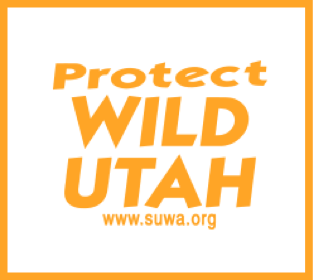|
For Immediate Release: September 6, 2006 Contacts: Interior Dept Inspector General to Investigate Whether BLM Conspired to "Fix" Utah Land-Use Plans WASHINGTON, DC (September 6, 2006) The U.S. Department of Interior's Inspector General has opened an investigation into allegations that Utah Bureau of Land Management (BLM) officials may have made commitments behind closed doors to “fix” new land-use plans to assure more oil and gas and other development on wilderness-quality lands in the state. Congressman Maurice Hinchey (D-NY) requested the probe in August after learning of a leaked e-mail from Bob Weidner, a lobbyist on behalf of several Utah counties, that discussed the activity of BLM officials. “By launching this investigation, the Interior Department's Inspector General is acknowledging that BLM may have violated the public's trust and the law when working in Utah to allow more oil and gas access to wilderness lands,” Hinchey said. “From everything we've seen, BLM officials appear to have acted against the best interests of the American people and the environment in order to expedite plans that would advance the oil and gas industry in Utah. I’m very pleased that the Inspector General is acting responsibly by undertaking this important investigation and hope that the results of the probe will result in the safeguarding of this treasured land.” The leaked e-mail from Weidner reported on a meeting held in July 2006 with Henri Bisson (then-acting Utah BLM state director) and Interior Department official Jim Hughes regarding oil and gas and other issues in ongoing Utah BLM Resource Management Plans (RMPs). In the note to his clients, Weidner wrote, “We as counties owe it each other to strike while the iron is hot in finalizing these RMPs. As the governing documents over public lands for the next 20 years, working with the new State BLM Director and the State to ‘fix’ these RMPs is an opportunity which may never come again!” As BLM State Director in Alaska, Bisson has presided over the opening of Teshekpuk Lake to oil and gas leasing. Teshekpuk Lake is an extraordinary waterfowl habitat that had been originally protected by Reagan administration Interior Secretary James Watt. In response to the Weidner e-mail, Hinchey sent Interior Department Inspector General Earl E. Devaney a letter on August 9, requesting an inquiry into the meeting that Bisson, Hughes and Weidner attended, as well as into the larger question of whether these land-use plans are being rigged to favor oil and gas industry and other interests. In his letter to Inspector General Earl Devaney, Hinchey wrote, “Many in Congress, myself included, believe that the lands managed by the BLM in Utah are among the most splendid and spectacular landscapes in the world, and their environmental attributes are an extraordinary national asset that should be protected for future generations of Americans. Unfortunately, in making promises behind closed doors to certain parties who are primarily interested in maximizing the economic exploitation of these lands, BLM officials may have not only undermined the integrity of the agency’s land use planning process, but may have made commitments that will result in the permanent impairment of the environmental integrity of these lands for generations to come.” In a letter dated August 30, Devaney responded to Hinchey, informing him that the Office of the Inspector General has opened an investigation that would examine “concerns about top BLM officials making commitments to ‘fix’ several resource management plans that would reduce restrictions on access to public lands.” Devaney also said his office would probe Hinchey's concern about “BLM’s campaign to put a ‘public relations spin’ on its oil and gas leasing program.” “More than two-thirds of Utah’s BLM lands are currently available for oil and gas leasing, and the industry has thousands of approved permits that have not yet been drilled,” said Liz Thomas of the Southern Utah Wilderness Alliance. “That BLM may have been conspiring with local counties or industry to ensure exploitation of some of the nation’s most spectacular and scenic public lands is contrary to the public trust placed in these federal agency officials by citizens across the country. Some places serve a greater benefit to Americans by remaining pristine and natural.”
|
|
|

 Southern Utah Wilderness Alliance
Southern Utah Wilderness Alliance
Protecting Utah's Redrock Country
